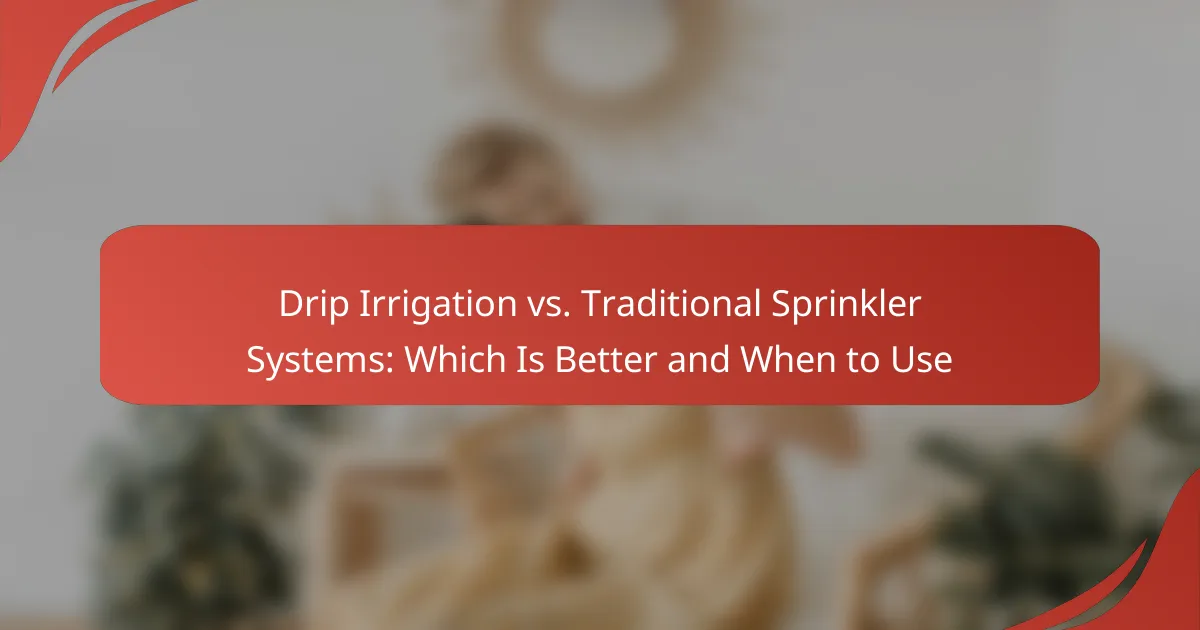When deciding between drip irrigation and traditional sprinkler systems, it’s essential to consider factors such as water efficiency and the specific needs of your plants. Drip irrigation excels in delivering water and nutrients directly to the roots, making it ideal for arid climates and precise applications, while traditional sprinklers are more cost-effective and suitable for larger areas. Understanding the strengths of each system can help you choose the best option for your gardening or agricultural needs.
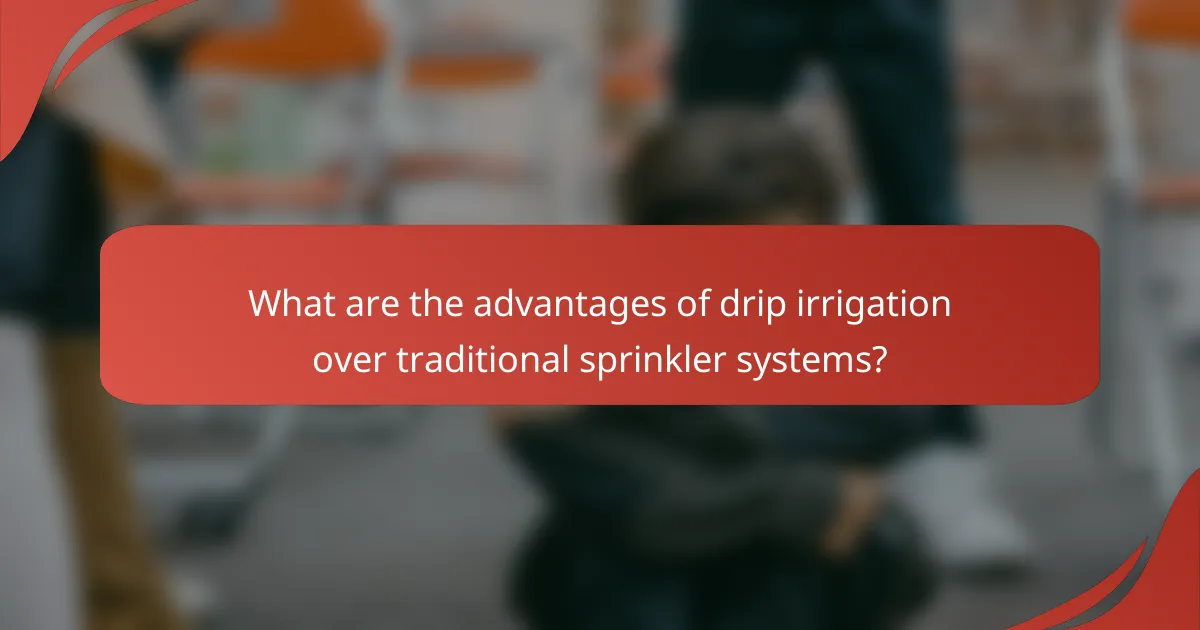
What are the advantages of drip irrigation over traditional sprinkler systems?
Drip irrigation offers several key advantages over traditional sprinkler systems, primarily in water efficiency and targeted delivery of nutrients. These benefits make it a preferred choice for many agricultural and gardening applications, especially in regions where water conservation is critical.
Water efficiency
Drip irrigation systems deliver water directly to the root zone of plants, minimizing waste. This method can reduce water usage by up to 50% compared to traditional sprinklers, which often lose water to evaporation and runoff.
For optimal water efficiency, consider using drip lines with emitters spaced according to the specific needs of your crops. This ensures that each plant receives the right amount of water without excess.
Reduced weed growth
By applying water directly to the soil around plants, drip irrigation limits moisture in surrounding areas, which helps suppress weed growth. Traditional sprinklers, on the other hand, can promote weed proliferation by wetting the entire garden or field.
To further reduce weeds, combine drip irrigation with mulch or ground cover. This creates a barrier that prevents weed seeds from germinating while retaining soil moisture.
Targeted nutrient delivery
Drip irrigation allows for the precise application of fertilizers and nutrients directly to the plant roots. This targeted approach enhances nutrient uptake and reduces the risk of nutrient runoff into the environment.
Utilizing a fertigation system, where fertilizers are mixed with irrigation water, can optimize plant growth and yield. Adjust the nutrient concentration based on the specific growth stages of your plants for best results.
Lower labor costs
Implementing a drip irrigation system can lead to reduced labor costs over time. Once installed, these systems require less frequent monitoring and maintenance compared to traditional sprinklers, which often need adjustments and repairs.
Consider automating your drip system with timers and sensors to further decrease labor needs. This setup can help manage watering schedules efficiently, freeing up time for other tasks.
Less evaporation loss
Drip irrigation significantly reduces evaporation loss, especially in hot and dry climates. Water is delivered directly to the soil, minimizing exposure to air and sunlight, which can cause rapid evaporation.
For best results, schedule irrigation during cooler parts of the day, such as early morning or late evening, to further reduce evaporation and ensure that plants receive adequate moisture.
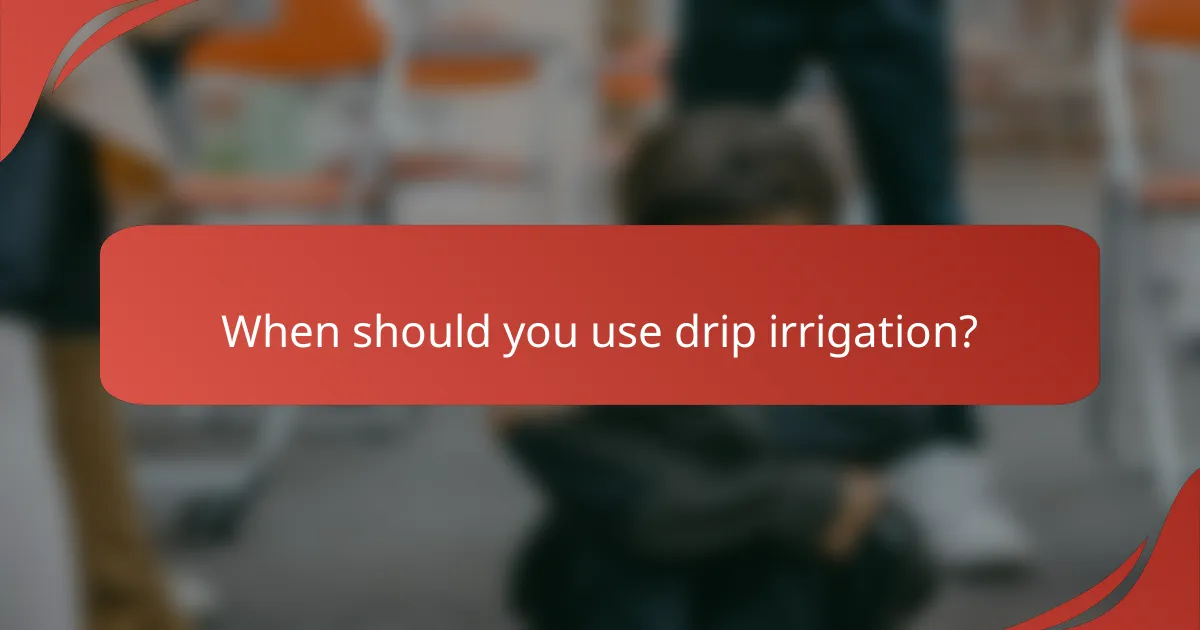
When should you use drip irrigation?
Drip irrigation is best utilized in specific situations where water efficiency and targeted delivery are crucial. It is particularly effective in arid climates, for row crops, in greenhouses, and during drought conditions.
In arid climates
In arid climates, where water scarcity is a significant concern, drip irrigation minimizes evaporation and runoff by delivering water directly to the plant roots. This method allows for precise control over water application, making it ideal for regions with limited rainfall.
Consider using drip systems in areas with high temperatures and low humidity, as they can reduce water usage by up to 50% compared to traditional methods. This efficiency helps sustain crops in challenging environments.
For row crops
Drip irrigation is highly beneficial for row crops, as it ensures that each plant receives the necessary moisture without wetting the entire field. This targeted approach promotes healthier growth and reduces weed competition.
When implementing drip systems for row crops, consider spacing emitters according to the crop’s root zone requirements. This customization can enhance yield and reduce water waste significantly.
In greenhouses
In greenhouses, drip irrigation provides a controlled environment where moisture levels can be precisely managed. This system helps maintain optimal humidity and temperature, which are vital for plant health.
Using drip irrigation in greenhouses can lead to better nutrient uptake and reduced disease risk, as water is delivered directly to the roots. Regular monitoring of system performance ensures efficient operation and crop success.
During drought conditions
During drought conditions, drip irrigation is an effective strategy to conserve water while maintaining crop health. It allows for deep watering, which encourages root development and resilience against dry spells.
Farmers should adjust their irrigation schedules based on soil moisture levels and plant needs, ensuring that water is used judiciously. Implementing mulch around plants can further enhance moisture retention in the soil.
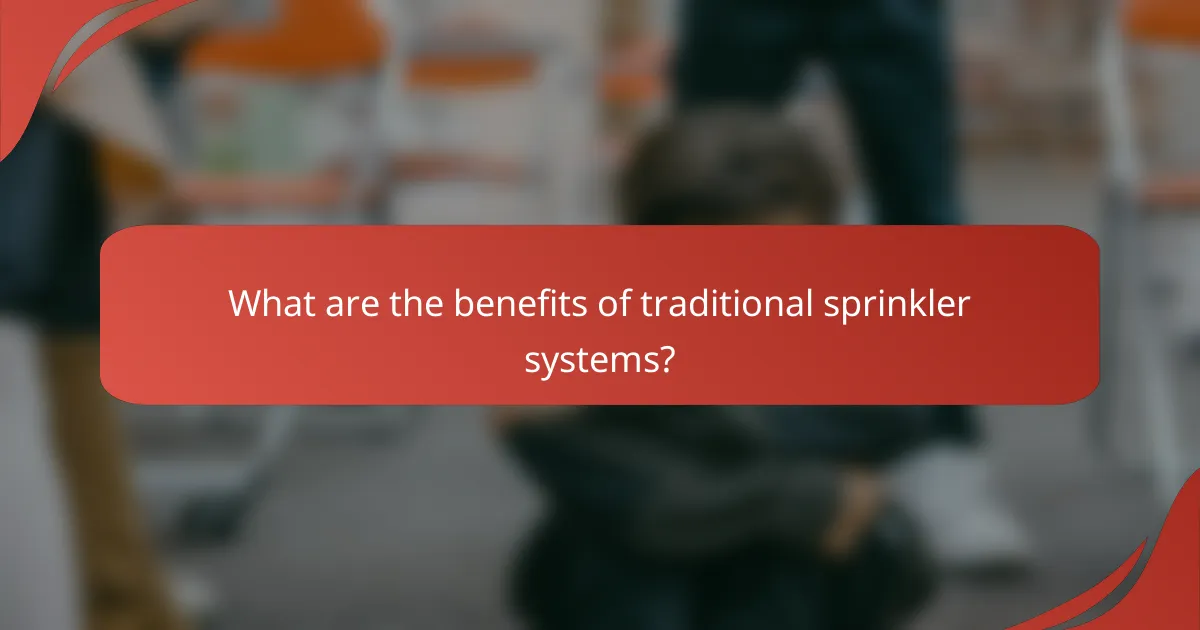
What are the benefits of traditional sprinkler systems?
Traditional sprinkler systems offer several advantages, particularly in terms of cost and ease of use. They are often preferred for large areas and can be quickly set up to provide effective coverage for lawns and gardens.
Lower initial cost
One of the main benefits of traditional sprinkler systems is their lower initial cost compared to drip irrigation systems. The basic components, such as hoses and sprinkler heads, are generally less expensive and more readily available. This makes them an attractive option for homeowners on a budget.
For example, setting up a basic sprinkler system can cost a few hundred dollars, while a comprehensive drip irrigation system may run into the thousands. This cost difference can be significant for larger properties.
Ease of installation
Traditional sprinkler systems are typically easier to install than drip irrigation systems. Many homeowners can set up a basic system themselves without needing specialized tools or extensive knowledge. Simple kits are available that include everything needed for installation.
In contrast, drip systems often require more planning and precise placement of components, which can complicate installation. For those looking for a quick solution, traditional sprinklers are often the better choice.
Coverage of large areas
Traditional sprinkler systems excel at covering large areas efficiently. They can distribute water over wide spaces, making them ideal for expansive lawns, sports fields, or gardens. Sprinklers can be adjusted to cover specific sections as needed.
For instance, a well-placed sprinkler can irrigate an entire backyard in a single cycle, while a drip system may require multiple lines to achieve similar coverage, which can be time-consuming to set up.
Flexibility in watering
Flexibility is another key benefit of traditional sprinkler systems. Homeowners can easily adjust the watering schedule and duration to accommodate changing weather conditions or specific plant needs. Many systems now come with timers that allow for automated scheduling.
This adaptability is particularly useful in regions with variable climates, where rainfall can fluctuate. Traditional sprinklers can be quickly turned on or off, providing immediate access to water when necessary.
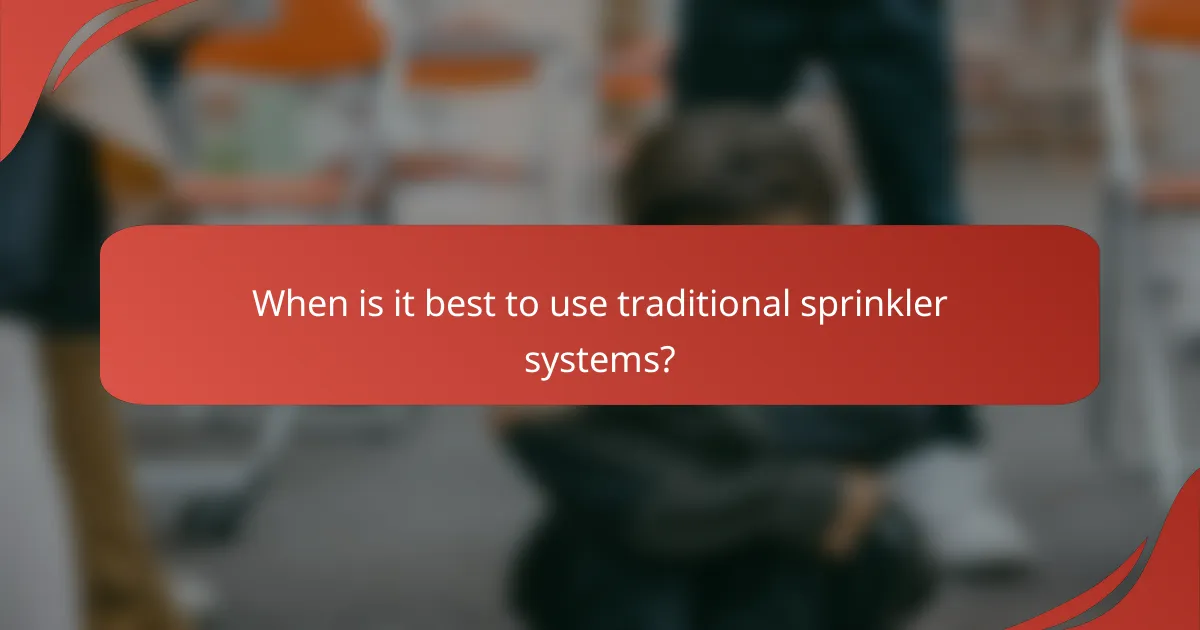
When is it best to use traditional sprinkler systems?
Traditional sprinkler systems are ideal for larger areas where even water distribution is essential. They work well for lawns and gardens that require regular irrigation, particularly in specific climates.
For lawns and gardens
Traditional sprinkler systems are particularly effective for maintaining lush lawns and vibrant gardens. They cover large areas quickly, making them suitable for residential yards and public parks. When using these systems, consider the type of plants and their water needs to avoid over- or under-watering.
For optimal results, adjust the sprinkler heads to ensure even coverage and avoid water waste. A good rule of thumb is to water early in the morning or late in the evening to minimize evaporation.
In humid climates
In humid climates, traditional sprinkler systems can be beneficial as they help maintain moisture levels without excessive water loss. These systems can deliver water directly to the plants while minimizing evaporation, which is crucial in areas with high humidity.
However, be cautious of over-watering, as this can lead to fungal diseases and root rot. Monitoring soil moisture levels can help determine the right watering schedule, typically aiming for about 1 inch of water per week, depending on rainfall and temperature conditions.
